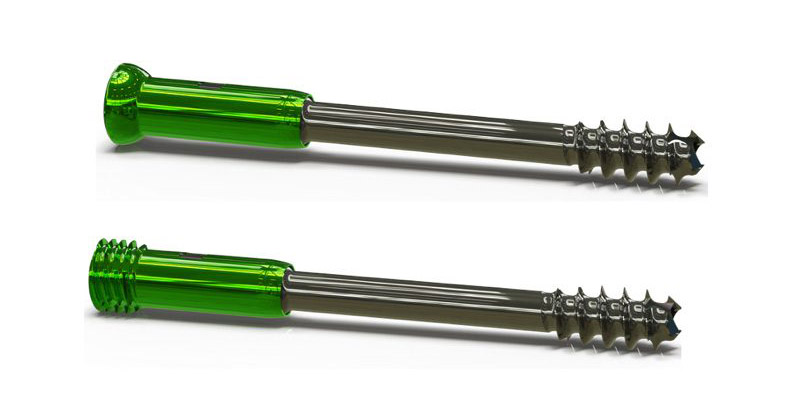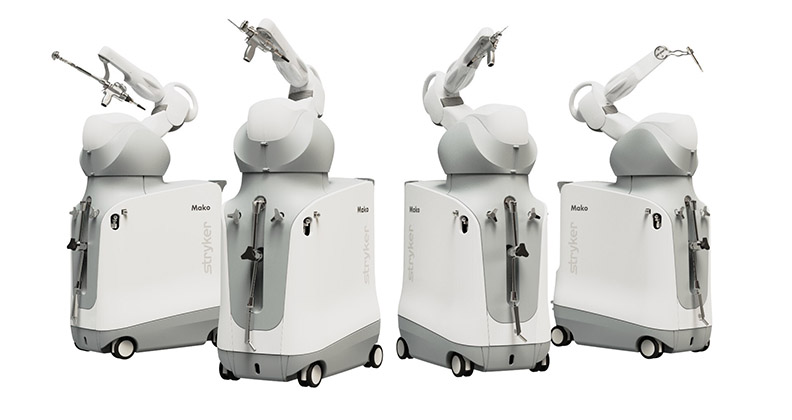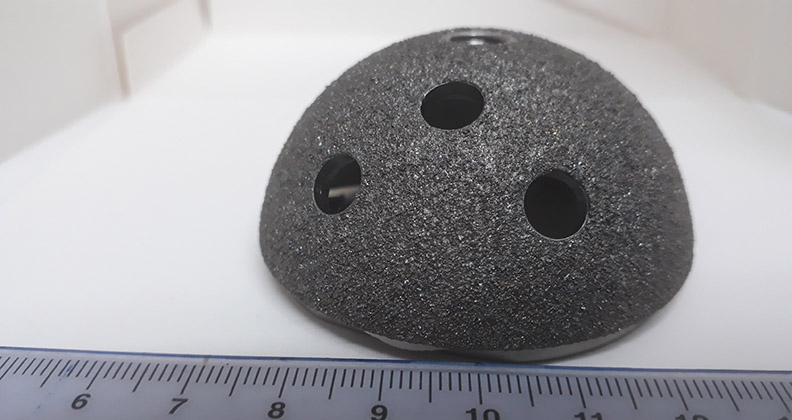
Regulatory professionals, device engineers and digital health experts gathered last month in Annapolis, Maryland, for the spring meeting of the Orthopaedic Surgical Manufacturers Association (OSMA). During a series of insightful and informative panel discussions, the industry reps weighed in on the digitalization of healthcare and what it will take to capitalize on AI-powered innovation in the orthopedic space. AI is rapidly transforming the orthopedic device industry in the ways new technologies are developed, regulated and adopted.
“The OSMA Spring Meeting underscored a pivotal moment for digital health and the orthopedic industry,” said Suchi Basu, Ph.D., RAC, Director of Regulatory Affairs for Digital Surgery, Power Tools and Arthroscopic Equipment Solutions at Johnson and Johnson MedTech. “The medical device industry is evolving at an unprecedented pace with advancements in AI, wearables, digital diagnostics, connected health platforms, 3D printing, digital twins and robotics. These innovations are creating devices that are smarter, more precise and seamlessly integrated into patient care.”
Dr. Basu said the insights shared at the OSMA meeting emphasized the importance for collaboration among all stakeholders —manufacturers, regulators, trade associations and healthcare providers — to effectively navigate the complexities of this changing landscape.
“Striking a balance between fostering innovation and ensuring patient safety and access will be vital challenges as we move forward,” she said. “As we embrace this digitally-driven era, the integration of advanced technologies like AI and machine learning into healthcare practices, particularly in orthopedics, must be underpinned by a proactive and supportive regulatory framework.
“It is through these collaborations and adaptations that the healthcare industry can unlock its full potential for transformative change.”
The Rise of Agentic AI
Oliver Richards, Managing Director of Medical Device & Life Sciences Strategy at Accenture, sees the evolution of AI in a way that focuses on how systems think and act.
He explained that traditional AI tends to be rules-based and static, solving defined problems with limited human input. Generative AI (think ChatGPT) is more dynamic, but still largely transactional. You input questions; it spits out responses.
“What’s really exciting is the emergence of agentic AI,” Richards said. “These systems are designed to solve specific problems or carry out defined processes more autonomously. Unlike generative AI, agentic AI systems learn and evolve to better achieve their objectives.”
Agentic systems can also collaborate with other AI agents or humans as part of a broader solution. Richards described a framework in which different types of AI agents play complementary roles: a “doer” agent that executes tasks, an “organizer” agent that coordinates efforts, and higher-level operators that manage networks of other agents.
“Real-time response and decision-making is going to be much, much faster,” Richards said.
He noted that agentic AI can improve regulatory efforts by handling customer complaints about specific products. Customers would receive timely answers, and the feedback data would be managed efficiently. The technology could also play an important role in monitoring and collecting postmarket surveillance data.
Ultimately, AI-driven solutions should be treated no differently than any other medical device. They must meet the same regulatory expectations for safety, effectiveness and clinical justification.
Developing Trust
You can’t produce AI-driven solutions without clean data, said Jens Lauber, Global Lead in Quality and Regulatory, Life Sciences at Accenture. “If you don’t have sufficient data or if your data is unstructured, you can’t build a reliable system,” he added.
Lauber emphasized that data structuring isn’t just a technical task. It’s essential to gaining confidence among the stakeholders who use the information. “From the very beginning, it’s essential to structure your data properly and ensure you collect enough of it to inform product development,” he said.
Once that foundation is established, trust becomes the next major hurdle. The primary challenge for companies commercializing AI-driven devices in large markets such as orthopedics is not just development and product launch but achieving early market adoption.
“End users need to trust these systems,” Lauber said. “If trust is lost, the technology won’t be tested or implemented.”
That trust hinges on demonstrating value, according to Lauber.
“When you can show that your system is data-driven, human-centric and improves outcomes, acceptance follows,” he said. “You need to present that evidence to stakeholders by showing concrete benefits, such as saving clinical time and supporting clinicians in meaningful ways.”
Cybersecurity must also be built into the DNA of new product development, not bolted on at the end. Conor Hogan, Global Practice Director – Data Governance, Digital Trust, Consulting Services at BSI Group, said the future of AI in medical devices centers on one key aspect: responsibility.
“The real issue is a mindset gap, especially around cybersecurity,” he said. “Too many development teams still treat security as an external concern, something for the IT department to handle or just a box to check.”
That thinking is dangerously outdated, according to Hogan, who said cybersecurity is about more than keeping data secure when dealing with connected orthopedic systems. A device that can be compromised could result in patient harm.
“We know the cybersecurity rules, and we understand the risks,” Hogan said. “What’s missing is accountability embedded in every sprint, every line of code and every software update deployed into a clinical environment.”
Manan Hathi, Senior Manager of Digital Health Regulatory Policy and Intelligence at Stryker, also highlighted the importance of keeping digital devices secure beyond the beginning stages of product development.
“Cybersecurity during the design phase isn’t the end of the story,” Hathi said. “This is a key distinction from traditional medical devices. Once a connected product is on the market, its security journey doesn’t stop.”
Even if a product launches without known risks, that status can change quickly.
“A new vulnerability could emerge tomorrow,” Hathi said. “That’s why postmarket surveillance and continuous risk management are critical. Security needs to be treated as an ongoing lifecycle commitment, not a one-time design exercise.”
The Benefits of Simulation
As digital tools continue to expand, simulation is becoming a key aspect of the product development pipeline. Cheryl Liu, Ph.D., Director of Computer Modeling & Simulation at Stryker, sees a strategic opportunity to streamline innovation with AI.
“Setting up and executing simulations demands a significant number of engineering hours,” she said. “It doesn’t make sense to have a full team of Ph.D.s repeatedly refining the same types of simulations.”
Instead, Dr. Liu’s team leverages machine learning and AI to create surrogate models that are trained on physics-based simulations to automate and accelerate device analysis. “Simulation enables better, faster and more cost-effective innovation,” she said.
These tools play a key role in early product development. “When a surgeon comes to us with an idea, it’s usually early in the process, and the budget is limited,” Dr. Liu said. “Simulation allows us to quickly assess which concepts are viable, and which are not, before committing significant resources.”
For Luca Emili, CEO at InSilicoTrials, the fusion of AI and simulation has opened the door to the possibility of conducting digital clinical trials.
“The convergence of AI, mechanistic modeling and digital patient data is revolutionizing how medical devices and combination products are developed,” Emili said. “These tools enable safe, rapid and cost-effective innovation through in silico simulations that replicate complex human-device interactions.”
Emili explained that once you’re able to combine the device with the part of the body it interacts with, you can begin to make highly specific predictions — not just about the performance of the device, but also about the feedback it generates within the body. You can also assess which type of implant may be best suited for an individual patient based on their specific conditions and even compare the product’s performance with others already on the market.
For orthopedic implants, AI-driven simulations can model fatigue, stress, wear and bone integration. Increasingly, simulations also incorporate biocompatibility.
This kind of analysis is especially valuable in the orthopedic R&D applications when companies are trying to determine the competitive edge of an innovation under development. One involves patient-specific simulation, during which you model a virtual patient to create a personalized implant. The other allows engineers to adapt and optimize implant designs across a representative range of real-world patients.
“You can test hundreds or thousands of variations in a fraction of the time and cost compared to real-world testing,” Emili said. “That’s vital for tailoring devices to real-world variability and improving both safety and performance.”
Lifecycle Approach to Regulation
A changing regulatory landscape will impact the progress made in the development of AI applications. As FDA and international agencies move toward total product lifecycle models for AI oversight, companies must prepare for continuous accountability.
FDA’s new AI lifecycle guidance marks a shift from traditional guidance documents, which have typically focused on the premarket phase. Device manufacturers must now consider how they will manage AI components over their entire lifecycle to ensure that transparency and trustworthiness are built into the models from the start.
The guidance also raises critical questions: How will companies monitor AI models over time? How will they ensure performance remains consistent and reliable? How do they detect and manage model drift? What mechanisms will be used to keep models updated so they continue to meet intended purposes in a changing environment?
Questions clearly remain about AI’s future role in the development of innovative orthopedic devices. The only certainty is that efforts to maximize AI applications must continue during the evolving digitalization of healthcare.
DC
Dan Cook is a Senior Editor at ORTHOWORLD. He develops content focused on important industry trends, top thought leaders and innovative technologies.




